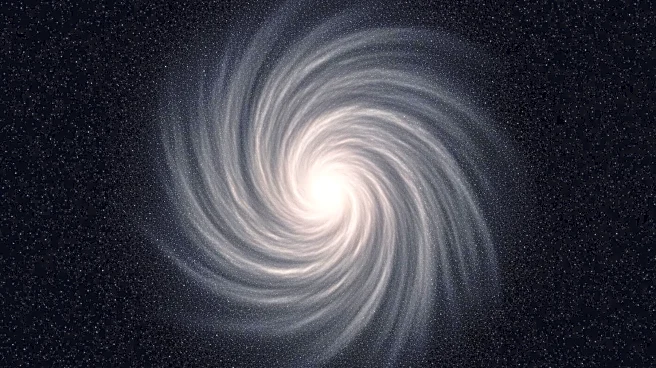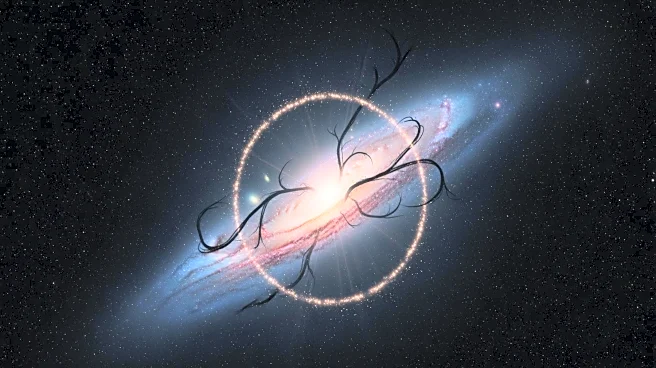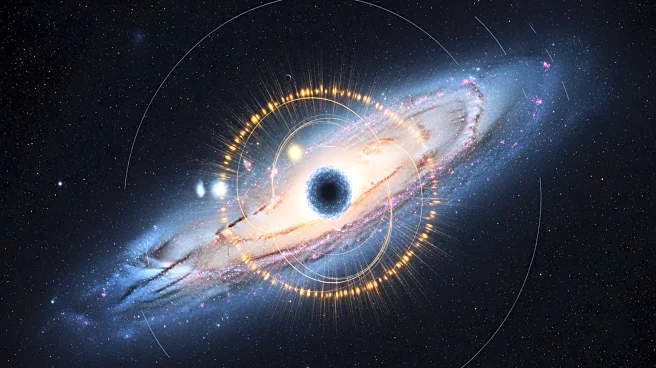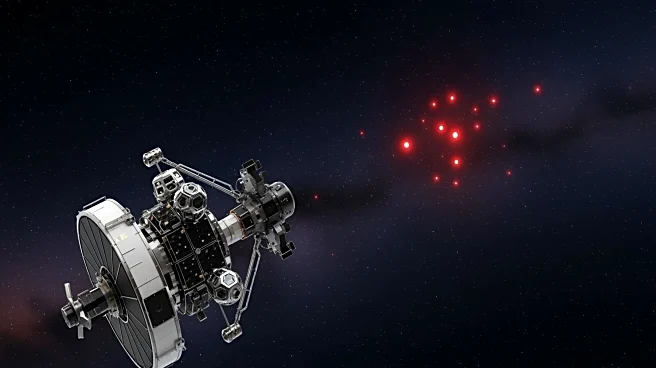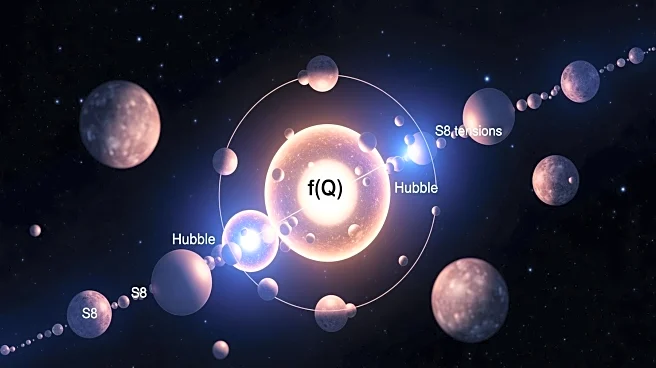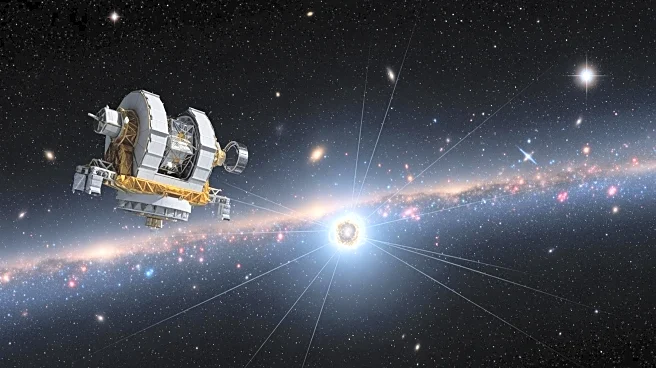What's Happening?
Researchers Philippe Brax and Patrick Valageas from the Institute of Theoretical Physics have been studying ultralight dark matter models, focusing on the formation and dynamics of vortices and solitons
within dark matter halos. These models, described by a non-linear Schrödinger equation, suggest that dark matter behaves like a wave rather than point particles. The study, published in Physical Review D, reveals that rotating dark matter halos can give rise to vortices, which organize into a stable network in the halo's core. These vortices, with quantized angular momentum, could potentially offer new methods for detecting ultralight dark matter by analyzing their gravitational signatures in galaxies.
Why It's Important?
The study of vortices in ultralight dark matter halos could significantly advance our understanding of cosmic structures and the nature of dark matter, one of cosmology's greatest mysteries. If these vortices exist, they could provide a novel way to detect dark matter, which has been elusive despite its significant role in the universe's mass and structure. This research could lead to breakthroughs in astrophysics and cosmology, offering insights into the fundamental forces shaping the universe. The potential to link these vortices to the cosmic web's filaments could also enhance our understanding of large-scale cosmic structures.
What's Next?
Future research may focus on confirming the existence of these vortices through observational data, potentially using gravitational lensing or other astrophysical phenomena. If successful, this could lead to new methods for studying dark matter and its interactions. Additionally, exploring the connection between vortex lines and cosmic web filaments could open new avenues in cosmological research, potentially leading to a deeper understanding of the universe's structure and evolution.
